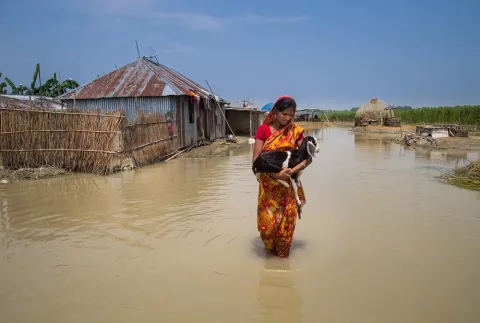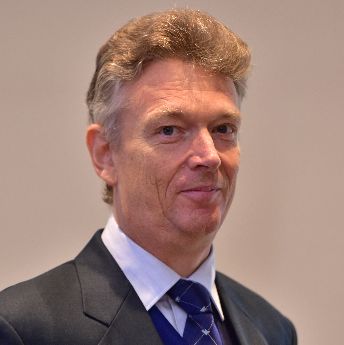
Cool in crisis: How Bangladeshi MFIs stay resilient
by Graham Wright, Samveet Sahoo and Anik Muntasir Chowdhury
Sep 2, 2021
4 min
Since its independence, Bangladesh’s resilience in the face of numerous calamities like floods, droughts, and famines has earned worldwide appreciation. This blog explores how the country’s microfinance industry stays resilient during crises and continues to protect the poor and vulnerable.
In its 50 years since independence, Bangladesh has endured numerous natural calamities like flash floods, droughts and famines. The resilience of the country and its people has often earned appreciation. Throughout these many crises, the country’s microfinance industry — particularly its more prominent players — has continued to protect the poor and vulnerable and help them to recover.
1. Trusting customers and continuing core operations during crises
Historically, MFIs in Bangladesh have maintained strong relationships with their borrowers during times of crisis. They have continued to trust and engage with borrowers, offer new loan disbursements and make rescheduling options available for existing loans. These measures are only feasible as long as that trust is reciprocated by the MFI clients. This bond of good faith enhances the resilience of MFIs, as it gives them the freedom to creatively adjust their operations and strategy during crises.

In 1987 and 1988, Bangladesh saw catastrophic flooding that affected two-thirds of the country. They cumulatively took 4,036 lives and caused financial damage equivalent to $2.5 billion (BDT 75 billion at the time). Grameen Bank, the Bangladeshi Rural Advancement Committee (BRAC) and the Association for Social Advancement (ASA) offered loans to some of the 25 million flood victims who were made homeless by the calamity. Through this experience, they discovered that the poor had a strong propensity to repay, even in chaotic post-disaster situations.
This trust in borrowers set the tone for MFIs’ responses to subsequent crises. During the floods of 1998, BRAC provided its customers with access to half of their compulsory savings. BURO Tangail completely opened up its savings, enabling customers to withdraw any amount from their savings account at any time. BURO also removed its requirement that clients hold 15% of their loan in their savings account. In 2000, Grameen Bank, BRAC and ASA waived loan payments for members affected by Cyclone Sidr.
This approach has continued to the present day. Many of Bangaldesh’s 21,000 MFI branches had to shutter their doors when lockdowns began in April 2020. The government introduced several restrictions. To comply with these restrictions, many MFIs instructed their branch offices to cease all transactions, including the release of savings. However, MFIs were quick to revive their operations as soon as the government lifted the restrictions.
2. Offering non-financial services to improve customers’ well-being
The mission of MFIs in Bangladesh goes beyond providing financial services alone. Many, particularly BRAC, offer a wide range of services in addition to their core financial products as an integral part of their business strategy. These services range from education and health services to last-mile distribution of international aid. Bangladeshi MFIs amplify and expand these adjacent services in times of crisis to protect their borrowers and thus their loan portfolios. Through these initiatives, the MFIs garner greater credibility with their customers and also help them get back on their feet sooner, which in turn helps strengthen the MFIs. They realize that their organizational health is intertwined with the well-being of their clients.
These services have been available to the general population, not just their own clientele. ASA extended food assistance to 154,670 vulnerable families, distributing 2,475 metric tons of food materials worth $1.38 million (BDT 11.69 crore). The Emergency Cash Relief program of Grameen Bank provided unconditional cash transfers to women with families hit severely by the pandemic. BURO Bangladesh distributed relief packets comprising essential food items, hand sanitizers, and face masks among 50,000 poor families. BURO also equipped its field staff with comic books in Bangla to build their capacity to raise awareness in the community regarding COVID-19.
In addition to providing cash transfers and food assistance, BRAC conducted mass-scale hygiene awareness campaigns. It set up 50,000 hand-washing stations and distributed 1.2 million masks in communities, mostly in crowded locations, such as mosques, markets, schools and bus stands. The BRAC Urban Development Programme collaborated with municipalities to provide hand sanitizers to pedestrians and passengers. In partnership with Unilever, BRAC distributed 500,000 soap bars in slums. BRAC also circulated more than 2.5 million leaflets and 500,000 stickers with messages to spread awareness of COVID-19 at the grassroots level.
Relief efforts of leading MFIs during COVID-19

What’s next for MFIs in Bangladesh?
While MFIs have proven resilient in the past, the impact of COVID-19 is still playing out. A CGAP global survey during the second half of 2020 showed that liquidity was not an urgent concern for MFIs. This was likely due to liquidity support from the government and funders, reduced lending during the lockdown, and reduced operational expenditures resulting from lower branch activity and staff layoffs. However, solvency remains an issue for MFIs.
Consequently, many MFIs, especially the smaller ones, have had to use capital funds for operational expenses. PAR 90, or the percentage of the gross loan portfolio for all open loans overdue by more than 90 days, increased from an average of less than 2% in March 2020 to 39% in September 2020, according to a BFPB report. They realize that their organizational health is not at odds, but rather intertwined, with the well-being of their clients.
The blog was first published on CGAP on 31st August, 2021
 by
by  Sep 2, 2021
Sep 2, 2021 4 min
4 min


Leave comments